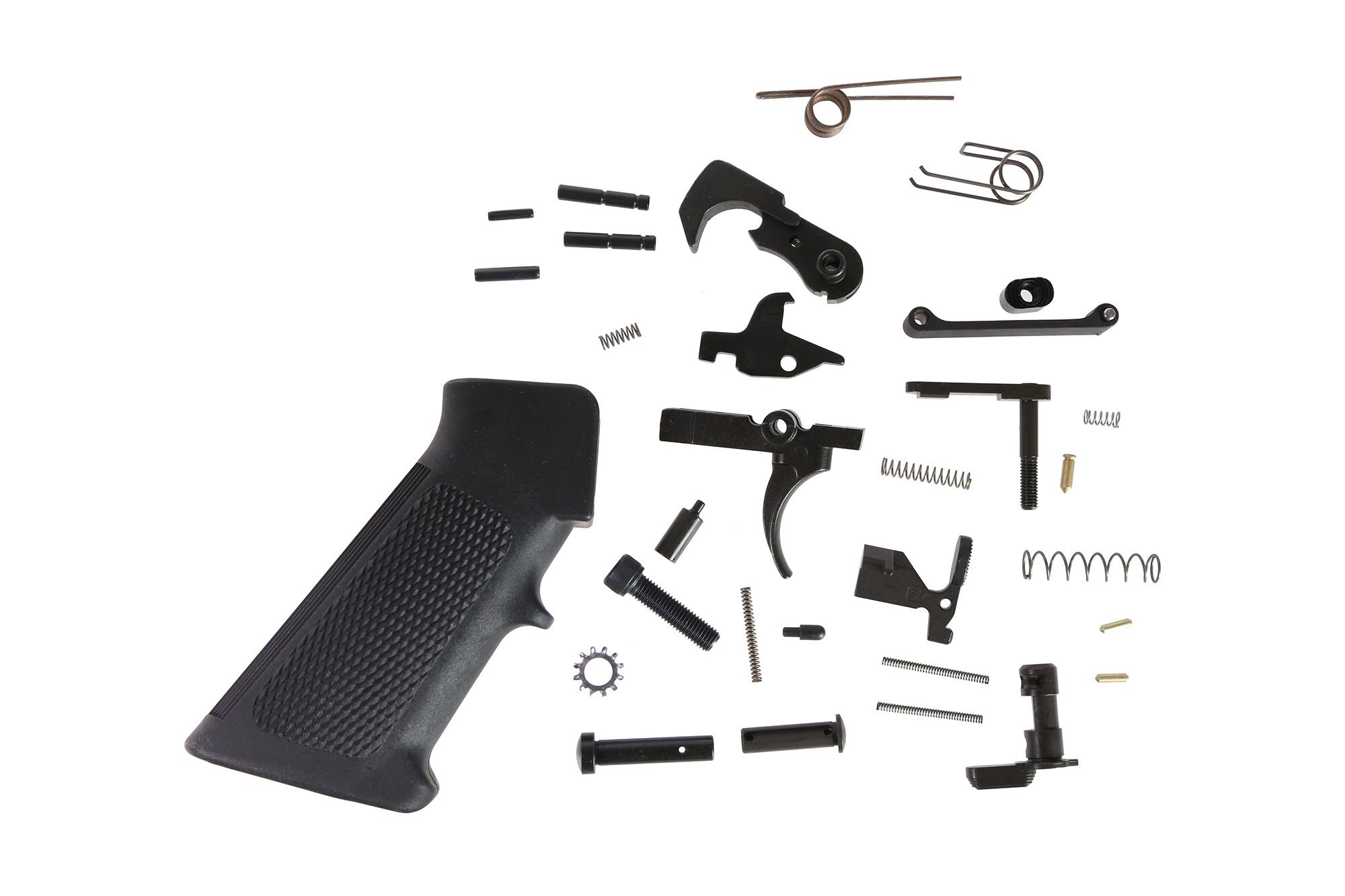

Plastic is cheaper than aluminum, easy to work with, and lighter. Polymer lowers, colorized, 2021, probably Polymer lowers would languish and be mostly ignored for several decades but the idea eventually came back. Colt was playing around with the design in the late ‘60s, it didn’t get past the testing phases - but they still were the first. Surprisingly, polymer lowers really aren’t new. Polymer Lowersīecause of the growing popularity of polymer lowers, it’s worth talking about the pros and cons, how they are generally made, and why you might want one…or might not want one. The ability to manipulate your rifle from both sides have benefits that will only present themselves when you truly need them.
#Best ar lower parts kit 2017 full
You never know when you’ll be hurt, when you’ll need to switch sides when you’ll have your hands full with something or someone els. But for competition, SHTF, or home defense - I really recommend looking at ambi lowers or at least adding a ambi safety and mag to your normal lower. If this is purely a range toy, then ambi really doesn’t matter.

Simple, so you can use all of the controls from both sides of the rifle. Aero Precision Ambi lower using a PDQ Ambi- Bolt Release/Stop Okay, But Why? Often an ambi lower will let you release your bolt from both sides, but will only let you lock it back from one side. Note the difference between a bolt release and a bolt catch. Rainier Arms bolt release only ambi lower The best, and in my opinion the only ones that should have the right to call themselves ambidextrous, will have the mag release, the safety, the bolt release, and a bolt catch on both sides. Good ones will have the mag release, the safety, and a bolt release on both sides. Strike Industries ambi mag release on a Aero Precision lower Example of an ambi safetyĪ step up from those will have a magazine release AND a safety selector on both sides. The bare minimum of an ambi lower is one that has a safety selector on both sides. There are no standard naming conventions for these features so you’ll often have to inspect each lower on their own to see what type they are. How, what, and where depends on the lower. If you see a brand making lowers for one price, then see some lowers for 2x or 3x the price from the same brand - chances are the expensive ones are ambi.Īmbidextrous lowers mean they have controls on both sides of the lower. This is a term you’ll see pop up now and then generally on premium lowers. This allows them to control the quality of nearly every part in the kit.This is ideal for an AR-15 you plan on using often and hauling around with you. I believe that only the plastic parts and springs are made elsewhere. They are one of the few places that is supposedly making nearly everything in their parts kit in house. Thankfully two companies have stepped in to fill the void.ĭaniel Defense makes an decent and very reasonably priced parts kit. Until recently you basically had to choose from the best of the rest. BCM LPKs only go into BCM lowers at this time. They are worth every penny if you need the utmost in quality and durability. Thankfully, it doesn’t have to cost a lot more.Ĭolt LPKs are excellent but they can be difficult to obtain and very expensive. Most people know the reality of the situation even if they don’t want to admit it. I have seen broken trigger/hammer pins, broken springs, and broken bolt stops. Premature parts breakage is obviously the most serious issue that you might face. Selector levers can feel mushy and without positive stops for the same reasons.

Due to poorly finished parts or tolerance stacking issues, many LPKs will have triggers that feel gritty, mushy, or heavy. The lack of quality control often shows itself in 3 easy to notice ways: sloppy triggers, sloppy selectors, and premature parts breakage. Higher end manufacturers tend to have parts made to their specifications and put these parts through more rigorous quality control procedures. Just because Company X gets their parts from the same place as Company Y doesn’t mean that 1) the parts were made to the same specification or 2) that the parts have been through the same level of quality control. You will often hear people say, “Company X gets these parts from the same place as Company Y, so they must be good.” While that statement may be technically true, it usually doesn’t tell the whole story. Most people are content to use whatever LPK they can find for the least amount of cash. Finding a quality lower parts kit for your AR-15 is more difficult. Finding a lower parts kit (LPK) for your AR-15 is easy.


 0 kommentar(er)
0 kommentar(er)
